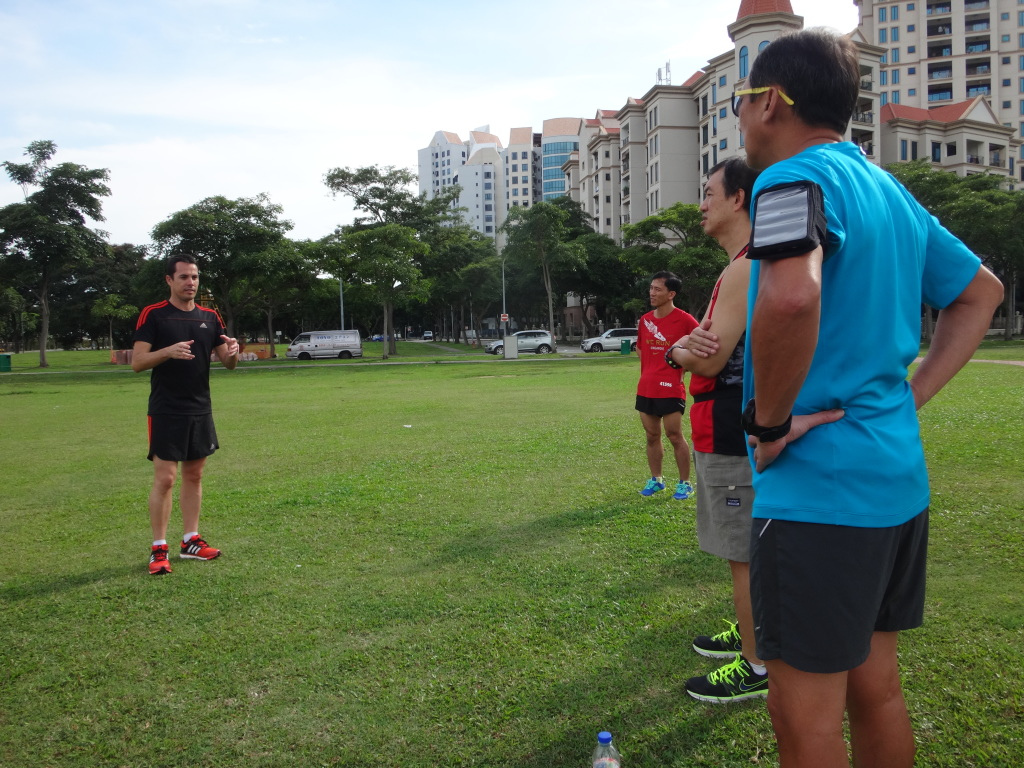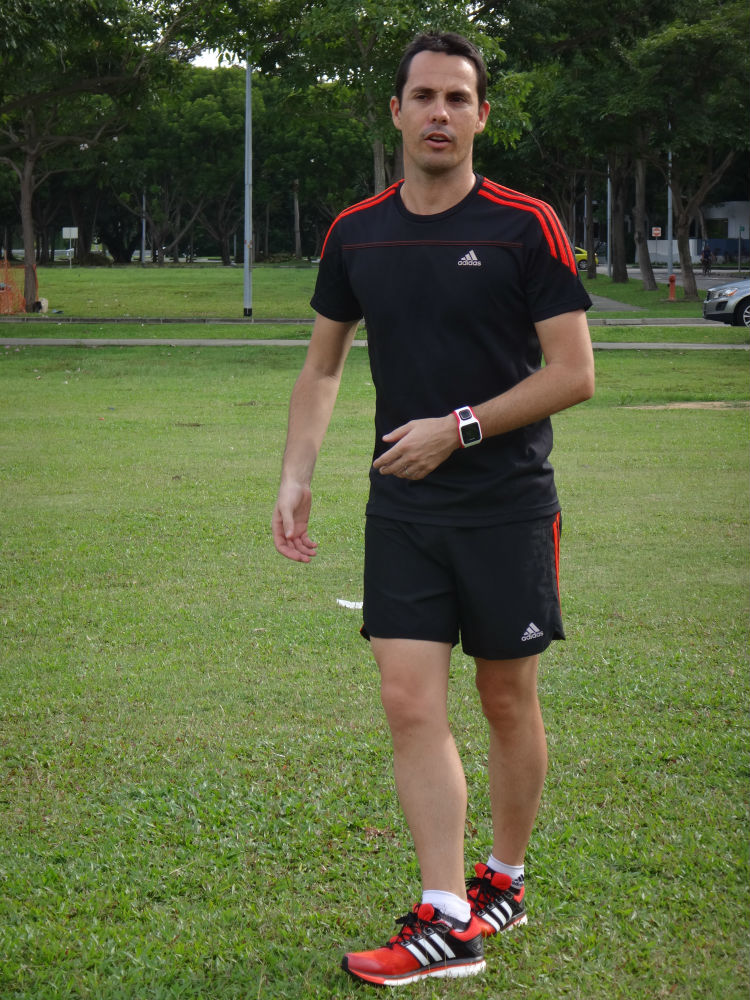To prepare runners for the StanChart Marathon Singapore on 7 December this year, a series of talks cum running clinics have been held.
The final talk and running clinic took place last Saturday, to give runners information about race day preparation and execution. Ben Pulham, founder of Journey Fitness Company, conducted the training.
After the talk, a practical session was held, to teach runners some basic dynamic drills that they should do before the race, in order to warm up their muscles.
Talk on Race Day Preparation and Execution
Here are the main highlights of the talk.
Both training and race execution are important for running a good race
According to Pulham, training and getting yourself fit is only one aspect of running a great race. Besides training hard in the months prior to the event you also need to execute the race well on the day itself, in order to get your best result.
In fact, sometimes people who go to a race with poor fitness levels can even clock a better timing than people who are many times fitter, but execute a race badly when it comes to the crunch. For example, a common mistake in executing a race, is to get excited and start a long run way too fast – only to end up crashing and hitting the wall halfway during the run.
How to maximise race preparation and execution
To maximise your race preparation and execution, only try and focus on the factors that you can control. Do not allow yourself to get worked up over such things as the weather.
Here are some controllable factors. If you can handle these well, your race will be better executed.
Training
As you probably know, it is important to build in enough time to run properly, in the months prior to race day.
For a full marathon, it is important to start a rigorous training regime about 16 to 20 weeks prior to the race. For a half marathon, at least 16 weeks of training before the race is needed, while a minimum of 8 to 12 weeks is essential for a 10km race.
Equipment
Many times, people make the mistake of buying something new, such as a pair of shoes, a new brand of energy gel or a hydration belt and trying it out for the first time – on race day.
This is always a bad race strategy, because more often than not, it may lead to problems such as chaffing and cramps. So remember that whenever you want to buy something new with the intention of using it on race day, make sure that you clock some training runs with it first.
Pacing
A good pacing strategy is important. More than 95 per cent of runners get their pacing strategy wrong – and start running the race much too fast, because of the excitement and adrenaline rush. As a result, they’ll crash and hit the wall, and end up walking the second half or the final third of the race.
There are three types of pacing strategies. These are:
Positive Splits
Starting the race faster than what you had originally anticipated, with the intention of having some banking time so that you can afford to slow down later, is commonly known as a positive split.
This is what many recreational runners tend to do during a race. But it not a good pace strategy, because it usually results in runners completing the race slower than their original intention.
Negative Splits
If you start a race conservatively and at a slightly slower pace than you are capable of, and then speed up in the second half of the race too, to finish very strongly, this is known as a negative split.
Many elite runners, especially the Kenyans, adopt this race strategy. However it takes plenty of practice to run successful negative splits, especially for a long race such as the full marathon.
Even Splits
This is a very safe race strategy because you are running at exactly the same pace during the entire race, from the first to the last kilometre – and as a result, are distributing your energy stores evenly throughout.
The StanChart Marathon pacers will be employing an even split strategy on race day. According to Pulham, this is a good pacing strategy to adopt.
Nutrition
Nutrition, especially what you eat on the day of the race, is another important factor to executing a race well. It is important to have suitable food on the day itself. For example, breakfast should consist of easy-to-digest foods, such as white bread/toast with jam or cereals such as cornflakes – to prevent stomach upsets.
Many recreational athletes usually also eat an hour before their race – which isn’t ideal because it does not distribute the energy through the muscles, in time for the run.
Instead, Pulham advises runners to eat three hours before a race. That means if the race flags off at 5am, you should wake up at 2am to eat breakfast – and then go back to bed if you still have the time.
It is also important to hydrate well during the race itself. Many runners don’t take hydration at the first few drink stations because there are large crowds there.
But you should take a bit of fluid at every hydration station along the route. After all, according to Pulham, it is better to lose five to 10 seconds at the beginning and finish strongly, rather than saving those 10 seconds – and crashing at the 30km mark.
Gels and electrolyte tablets are also an important nutrition source during the race for full marathon runners, as the human body isn’t able to store enough energy to run 42km at one go.
Your Thoughts
Your thoughts are also very important in executing a good race – and this is something that you can control very well. As a runner, you can make your thoughts work either for you or against you.
Try and trick your mind to stay positive, especially when things are getting tough. Do not think about the pain that you may be experiencing.
For example, if you are suffering from leg or foot pains, it is a good strategy to divert your attention away to the areas of your body that don’t hurt – such as your left arm or even your forehead. Contrary to belief, this works amazingly well in improving pain tolerance, according to Pulham.
Practical Running Clinic
For the second half of the session, Pulham conducted a practical running clinic, to teach StanChart Marathon participants some dynamic warm-up drills, which he recommends that we employ on race day.
According to Pulham, doing dynamic warm-up exercises are better than static ones. Dynamic drills help to warm up the muscles, to help them to feel more flexible for the hard workout session ahead. However, on the other hand, static exercises may cause the muscles to cool down before the exercise session and decrease muscle function. This may eventually lead to muscle-related overuse injuries in the long term. So do dynamic warm-up exercises, advises Pulham.
Some example of dynamic stretching exercises that Pulham taught us, include the common butt kicks and high knee cradles.



Leave a Comment